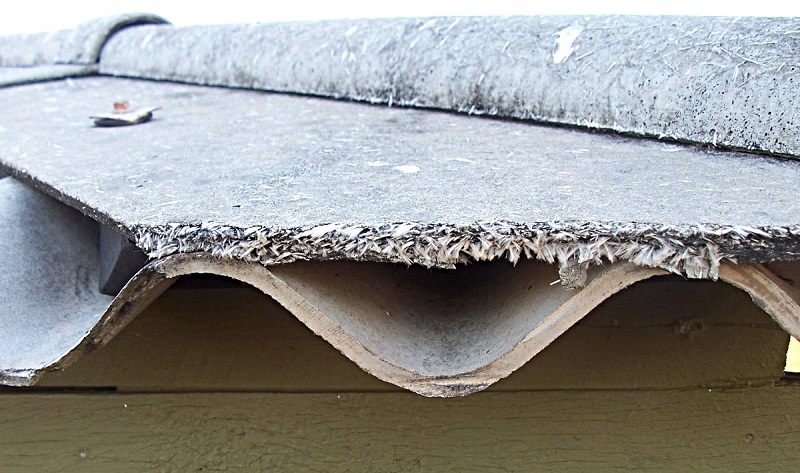Control of Asbestos Regulations 2012 CAR12
Contents |
[edit] Introduction
The Control of Asbestos Regulations 2012 (CAR12) came into force on 6 April 2012, updating The Control of Asbestos Regulations (2006). CAR12 states:
|
“asbestos” means the following fibrous silicates— (a) asbestos actinolite, CAS No 77536-66-4; (b) asbestos grunerite (amosite), CAS No 12172-73-5; (c) asbestos anthophyllite, CAS No 77536-67-5; (d) chrysotile, CAS No 12001-29-5 or CAS No 132207-32-0; (e) crocidolite, CAS No 12001-28-4; and (f) asbestos tremolite, CAS No 77536-68-6, and reference to “CAS” followed by a numerical sequence are references to CAS Registry Numbers assigned to chemicals by the Chemical Abstracts Service, a division of the American Chemical Society; |
[edit] Changes in regulations from 2006 to 2012
The differences between the two versions are fairly limited, although the 2012 regulations introduced additional notification requirements that apply to some types of non-licensed work.
Specifics of the changes around non-licenses work include:
- Notification of work and record keeping. Brief written records should be kept of non-licensed work which warrants notification. Copies should be retained of the notification along with a list of workers on the job. This should be annotated with an estimate of the level of likely exposure (based on experience of similar past tasks or published guidance) of those workers to asbestos.
- Medical surveillance. All workers (including self-employed personnel) doing notifiable non-licensed work with asbestos must be under health surveillance by a doctor. Workers who are already under health surveillance for licensed work do not need another medical examination for non-licensed work. However, medical examinations for notifiable non-licensed work are not acceptable for those doing licensed work.
[edit] Additional 2012 changes
In addition, some modernisation of language was made along with changes that reflect other legislation. For instance, the prohibition of supply and use of asbestos is covered by REACH (Registration, Evaluation, Authorisation and Restriction of Chemicals Regulations 2006).
The 2012 regulations updated the Approved Code of Practice (ACOP) as well. Two ACOPs, L127 (The management of asbestos in non-domestic premises) and L143 (Work with materials containing asbestos) were consolidated into a single revised ACOP. The ACOP was revised to make legal compliance clearer to duty holders and to reflect the changes introduced in the 2012 regulations.
NB: On 30 September 2015, the Asbestos Removal Contractors Association (ARCA) published a free guidance note for clients appointing asbestos contractors.
[edit] Update
On 24 May 2021, Health and Safety Executive announced the second post implementation review (PIR) of the Control of Asbestos at Work Regulations 2012 (CAR12). The review began with a survey, which started collecting responses on 21 May 2021.
[edit] Related articles on Designing Buildings Wiki
- Asbestos in construction.
- Asbestos management.
- Failure to mention asbestos.
- Health and safety for building design and construction.
- Legislative framework for building design and construction.
[edit] External resources
- Asbestos Removal Contractors Association.
- HSE, Asbestos: The survey guide HSG264.
- HSE, Managing and working with asbestos. Control of Asbestos Regulations 2012. Approved Code of Practice and guidance.
- Legislation.gov.uk, Control of Asbestos Regulations 2006.
- Legislation.gov.uk, The Control of Asbestos Regulations 2012.
Featured articles and news
CIOB report; a blueprint for SDGs and the built environment
Pairing the Sustainable Development Goals with projects.
Latest Build UK Building Safety Regime explainer published
Key elements in one short, now updated document.
UKGBC launch the UK Climate Resilience Roadmap
First guidance of its kind on direct climate impacts for the built environment and how it can adapt.
CLC Health, Safety and Wellbeing Strategy 2025
Launched by the Minister for Industry to look at fatalities on site, improving mental health and other issues.
One of the most impressive Victorian architects. Book review.
Common Assessment Standard now with building safety
New CAS update now includes mandatory building safety questions.
RTPI leader to become new CIOB Chief Executive Officer
Dr Victoria Hills MRTPI, FICE to take over after Caroline Gumble’s departure.
Social and affordable housing, a long term plan for delivery
The “Delivering a Decade of Renewal for Social and Affordable Housing” strategy sets out future path.
A change to adoptive architecture
Effects of global weather warming on architectural detailing, material choice and human interaction.
The proposed publicly owned and backed subsidiary of Homes England, to facilitate new homes.
How big is the problem and what can we do to mitigate the effects?
Overheating guidance and tools for building designers
A number of cool guides to help with the heat.
The UK's Modern Industrial Strategy: A 10 year plan
Previous consultation criticism, current key elements and general support with some persisting reservations.
Building Safety Regulator reforms
New roles, new staff and a new fast track service pave the way for a single construction regulator.
Architectural Technologist CPDs and Communications
CIAT CPD… and how you can do it!
Cooling centres and cool spaces
Managing extreme heat in cities by directing the public to places for heat stress relief and water sources.
Winter gardens: A brief history and warm variations
Extending the season with glass in different forms and terms.
Restoring Great Yarmouth's Winter Gardens
Transforming one of the least sustainable constructions imaginable.
























